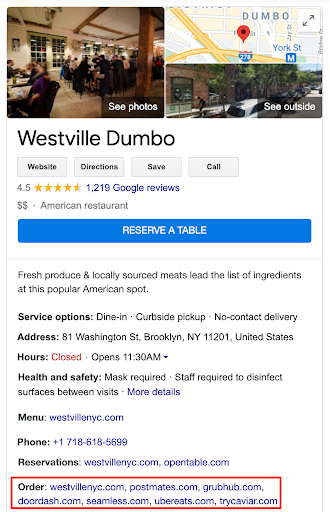To sign up for our daily email newsletter, CLICK HERE
Nowadays, there are tons of different huge corporations that have already taken their place in the sun. They have built strong marketing strategies that help them control business. Learn about these through authentic sources. Click here for more details.
In contrast to this, small businesses have always suffered from tough competition. This endless chase forces small business representatives to come up with a set of marketing strategies. However, not every small business marketing strategy provides the best results.
One idea is to activate your online ordering system and let clients order from any device, commission free – all while growing your digital presence.
In this post, you will get familiar with the 10 most resultative digital marketing ideas for your small business.
Let’s start!
1. Write Convertible Content
You know that actions speak louder than words. When it comes to marketing, the only thing that matters is the numbers. Thus, statistics show how well your marketing campaign performs.
In the world of digital marketing, traffic plays a crucial role in the overall success of your website performance. Content helps drive traffic to the website and acquire new potential customers for your business.
Check out these stats:

As you can see, Moz blog gets 80.9K organic visits monthly. What does it mean for the business?
Moz is one of the leading companies in the SEO industry that offers SEO tools and is a great SEMrush alternative. Their content covers SEO-related topics and highlights how Moz SEO tools can be used for website search engine optimization.
There is a question that you might ask yourself – how is it possible to attract so many website visits with content marketing?
The answer is simple – you should cover the topics that your target audience would search on Google. Moreover, these topics should present your product and show how it can help solve the issues people might have.
The biggest challenge in this process is to figure out what searches people type on Google.
You can do this using the Keyword Generator tool from Ahrefs. The only thing you need to do is to analyze niche-related keywords. Let’s review an example of how you can handle this.
Imagine that you are an owner of a small business company that offers sports nutrition. The Keyword Generator tool can suggest tons of keyword ideas based on the seed keywords, like “protein powder”, “creatine”, etc. Analyze these keywords and review the report “Phrase match” that you can find by clicking the “Matching terms” tab.

There are over 213K keyword ideas that you can be armed with. Obviously, you should take into account the most promising suggestions. Therefore, narrow down the results list by using two metrics – Keyword Difficulty and Search Volume.
Pick up the keywords you liked and move ahead to create content.
2. Publish Your Content on Medium
There is no point in creating unconvertible content. If it doesn’t drive traffic to your website, it is useless, right?
That is correct.
However, you should decide what to do with such content. You can delete it. Or publish on Medium.
Why Medium?
Because Medium is an excellent place where you can share content on whatever topics and it will always be in demand among users. There is a recommendation engine that analyzes users’ interests and suggests topics accordingly.
Therefore, your blog posts that don’t drive any traffic to your website will work on Medium for sure. As a result, you’ll get traffic and this content will find a new life.
3. Content Repurposing
Any piece of content becomes outdated with time. But it doesn’t mean that you won’t be able to benefit from it in the future.
How?
By repurposing it into other types of content.
For instance, if you noticed that one blog post gets a low level of traction, you can repurpose it into something more visually appealing. Let it be an infographic. Infographic design allows you to present the same topic from a new angle highlighting statistics. While you know that people like numbers that could prove or contradict some information.
Just review a few examples of how it works in practice.
A well-known website “The Whiskey Wash” covers everything related to whiskey. You can find tons of blog posts related to different sorts of whiskey. They decided to introduce the process of distilling in one detailed infographic.

It helped them to suggest a pretty basic topic from a new angle. Eventually, they could catch more eyeballs with this infographic than if they wrote a blog post.
Besides, you can repurpose your written content into videos, charts, presentations, and everything in between.
4. Get Your Product Listed in the ”Best X and Y” Posts
If you want to present your product or service in front of an audience, you should draw your attention to “lists” articles.
You might wonder how to find these “lists” articles and get your service mentioned there.
It would be better to proceed with the example. Imagine that you are an owner of a new startup that creates a recruitment software, or a co-working management software. This software helps people find coworking spaces near their location and book a working place.
Your first step is to work with Google. Type a search request “Best coworking management software” and review the suggestions.

When the opportunities are found, reach out to a blog editor and ask to get your service listed as well.
5. Explore Unlinked Mentions of Your Brand and Get Your Links Added
If you surf the web, you might notice brand names that have no link inserted.

The question is how to explore these unlinked mentions?
There is no point in exploring them manually. Instead, use a specific SEO tool like Content Explorer from Ahrefs. Type your brand name or service/tool name and apply the following filters: “One page per domain”, “Highlight unlinked domains” with the link to your website.

Collect the opportunities and build more links.
6. Apply Smart Targeting and Earn Views Across Niche-Related Forums
Did you know that Google can’t help you find answers to whatever questions you have? Sometimes you need answers to the more specific questions. You can find visiting different forums and Q&A platforms.
These forums can suggest business-related information and attract the right people to your website.
How to get the most of this marketing idea?
First and foremost, you need to find questions with business potential. You can do this by using the Keywords Explorer Explorer tool. Type your target keyword and review the “Matching terms” report by clicking on the “Questions” tab.

This report suggests questions that people ask Google for one hundred percent. Use these “question” keywords and create content based on these findings.
7. Try to Get To Featured Snippets
When people type whatever search request on Google, they can observe the following result that ranks number one on the SERP:

This is called a featured snippet. Featured snippets are small portions of information that Google suggests by analyzing top pages according to the search request.
Featured snippets attract clicks like hell. Thus, it is a wonderful opportunity to get extra traffic to your website. To get your content featured in the snippets, you need to know what types of content you should create for this purpose:
If you want to see your existing piece of content featured in the snippets, you will have to optimize it. But when you create new content, it should be optimized with the keywords that follow the search intent of the audience.
Businesses also have the possibility to optimize their Google My Business account to highlight their best features. For example, if you own a physical store selling custom clothing or restaurant, you’re going to want your menu and online ordering system to stand out so people can place orders directly from the snippet provided by Google.

8. Run a Competitive Analysis of Your Brand
You know that the marketing funnel includes a stage called “consideration” – the stage where your potential customers start to compare your brand with the others in the market.
To push the potential customers down the funnel to the “conversion” stage, you should give them an idea of why your brand stands out from the crowd.
To put it simply, don’t hesitate to compare your product or service to other alternatives within the niche.
Create an objective analysis of all the niche-related brands and write a blog post that you can publish on your website.

From the example above, you can see that it isn’t supposed to be a blog post with your objective analysis. It can be the results taken from the survey you can run among your target audience.
9. Don’t Forget to Translate Your Website to Different Languages
When you start your small business, you’re focusing on the audience that speaks one language. For example, US businesses will focus their efforts online with English as their main language. But when your business gets stronger, you’re starting to conquer other markets.
It leads to the necessity of adapting your website to multiple languages. This practice is widely used among companies around the world. For instance, Faberlic is a brand that produces cosmetics. It is a worldwide known company that has been created in the Russian Federation. Nevertheless, they have translated their website into 24 languages.

Keep in mind that if you decide to translate your website into multiple languages, you should work with a translation agency.
10. Appear on Niche-Related Podcasts
You as a business representative should spread the word about your brand by participating in niche-related podcasts. What’s more important, podcasting is the biggest content marketing trend nowadays.
How to find podcasts for your business specifically?
Go to Google and type the following inquiry “best {niche} podcasts” and reap the benefits.

Explore the opportunities and get in touch with podcast hosts to be one of the podcast guests.
To Conclude
Digital marketing ideas vary. There are tons of them. When one specific marketing idea can resonate with your small business, the other – will not. It depends on your small business specification.
You have got familiar with 10 digital marketing ideas that could be used for whatever small business you run. Nevertheless, use them wisely and make sure these marketing ideas complement each other.
If you think this post lacks more marketing ideas, feel free to share them in the comments section.
Author’s bio: Sergey Aliokhin is a Marketing Manager at Visme. When not at work, he likes to spend his time with family, read books on science-fiction, practice playing the bass, and visit the gym.